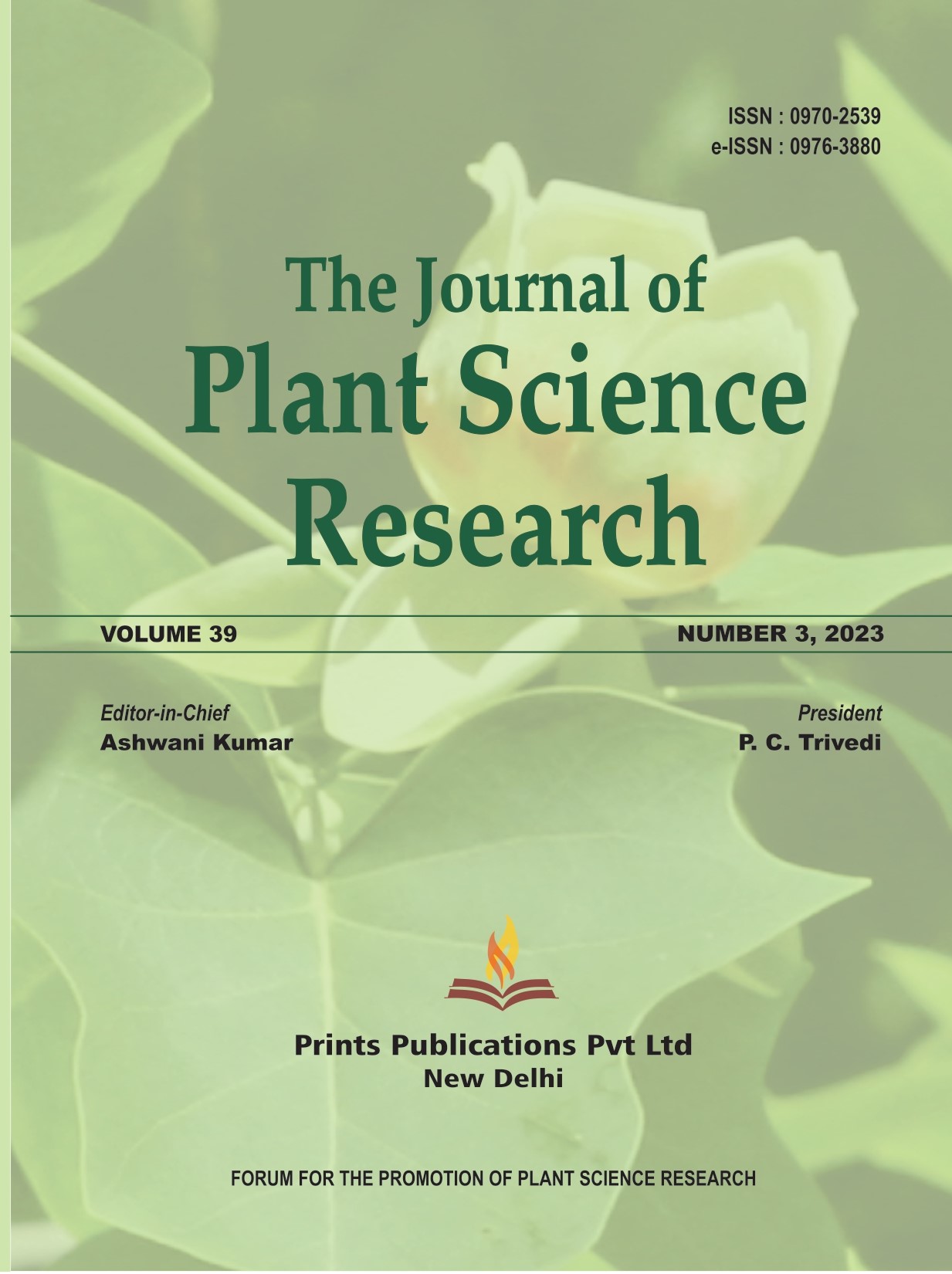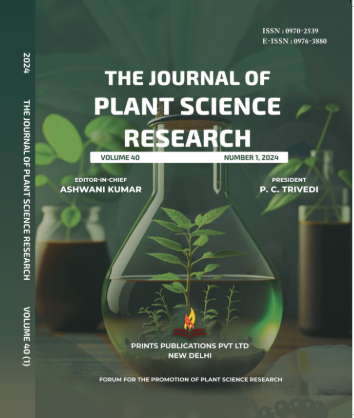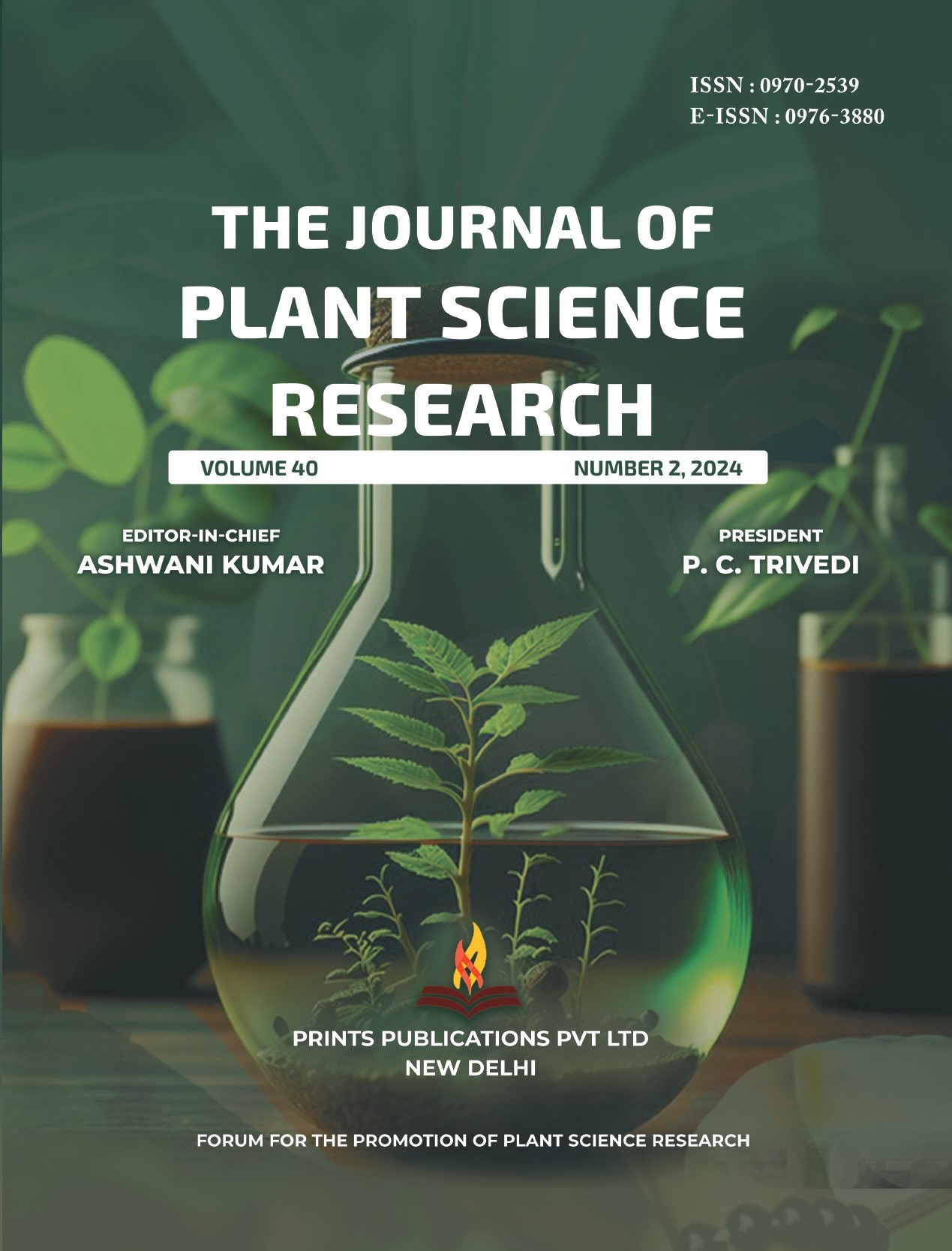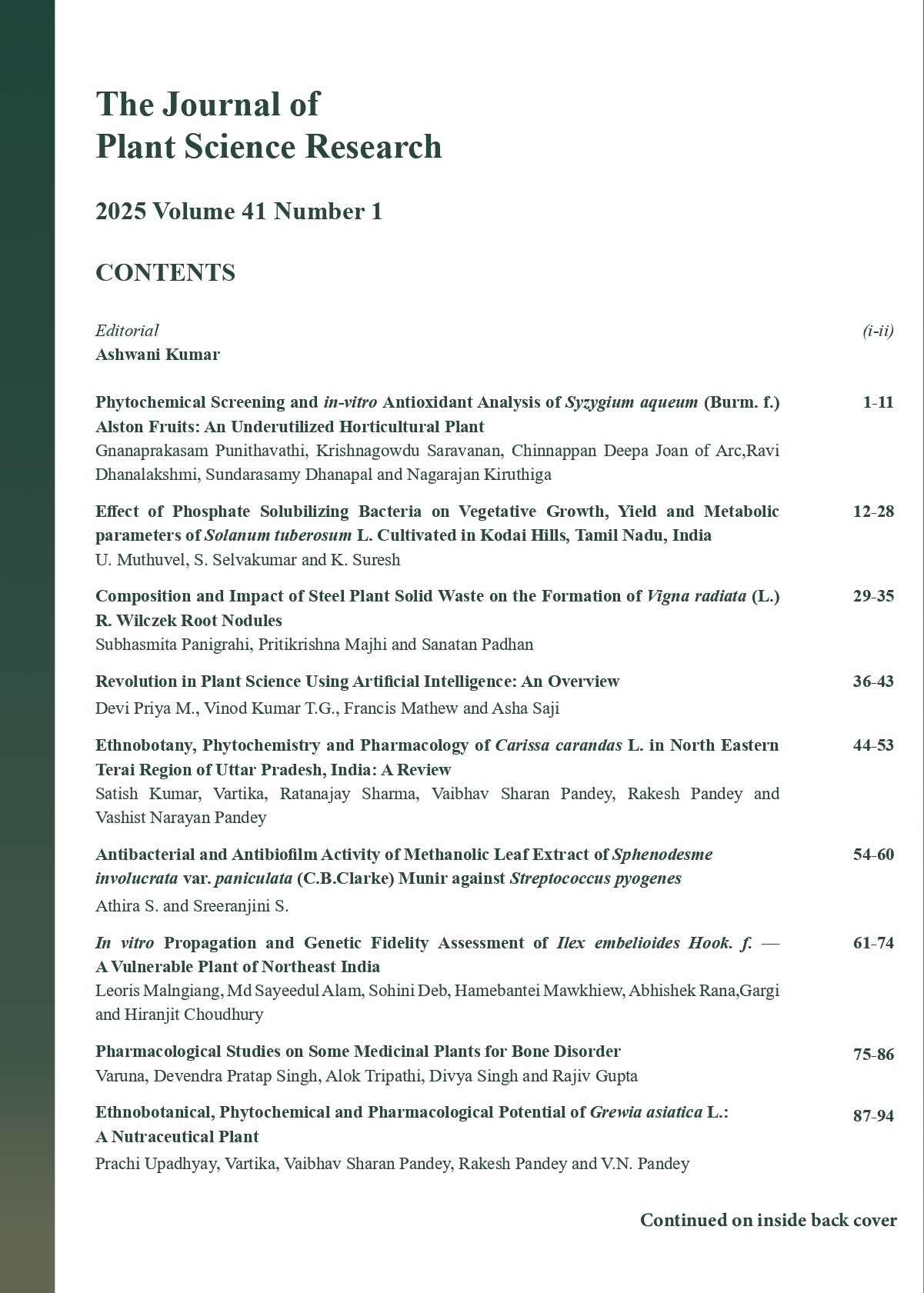The Journal of Plant Science Research - A UGC Care-Listed Journal
Published in Association with Forum For the Promotion of Plant Science Research
Current Volume: 41 (2025 )
ISSN: 0970-2539
e-ISSN: 0976-3880
Periodicity: Tri-annual
Month(s) of Publication: April, August & December
Subject: Botany
DOI: 10.32381/JPSR
Online Access is Free for Life Member
Phytochemical Screening and in-vitro Antioxidant Analysis of Syzygium aqueum (Burm. f.) Alston Fruits: An Underutilized Horticultural Plant
By : Gnanaprakasam Punithavathi, Krishnagowdu Saravanan, Chinnappan Deepa Joan of Arc, Ravi Dhanalakshmi, Sundarasamy Dhanapal, Nagarajan Kiruthiga
Page No: 1-11
Abstract
This study investigates the phytochemical composition, antioxidant properties, antidiabetic potential,and alkaloid profile of Syzygium aqueum fruit extracts. Phytochemicals screening identified various bioactive compounds, including tannins, phenols, flavonoids, alkaloids, glycosides, terpenoids, and coumarins, with reducing sugars detected exclusively in aqueous extract. Antioxidant activities were evaluated through DPPH and FRAP assays, showing that antioxidant efficacy improved with increasing concentrations and longer incubation periods. The total phenolic content analysis further highlighted the fruit’s potential as a natural antioxidant. The antidiabetic effects were assessed by analyzing α-amylase inhibition and glucose adsorption capacity. Among the tested concentrations, the 15 mg ml-1 aqueous extract exhibited the highest α-amylase inhibition, suggesting strong antidiabetic potential. Further analysis of the crude alkaloid extract, confirmed through UV and FTIR spectroscopy, revealed prominent functional groups, including C=O, C–H, C=C, C–O, and C–C, suggestive of a complex phytochemical profile. These findings underscore S. aqueum potential as a valuable source of natural antioxidants and antidiabetic agents, with implications for functional foods and phytomedicine targeting oxidative stress and blood sugar regulation. This study supports further in-vivo investigations to validate these effects and explore the specific mechanisms of action.
Authors :
Gnanaprakasam Punithavathi, Krishnagowdu Saravanan, Chinnappan Deepa Joan of Arc, Ravi Dhanalakshmi and Sundarasamy Dhanapal
Assistant Professor, Post Graduate and Research Department of Biotechnology, Arignar Anna College (Arts and Science), Krishnagiri, Tamil Nadu, India.
Nagarajan Kiruthiga : Assistant Professor and Head, Post Graduate and Research Department of Biotechnology, Arignar Anna College (Arts and Science), Krishnagiri, Tamil Nadu, India.
DOI: https://doi.org/10.32381/JPSR.2025.41.01.1






